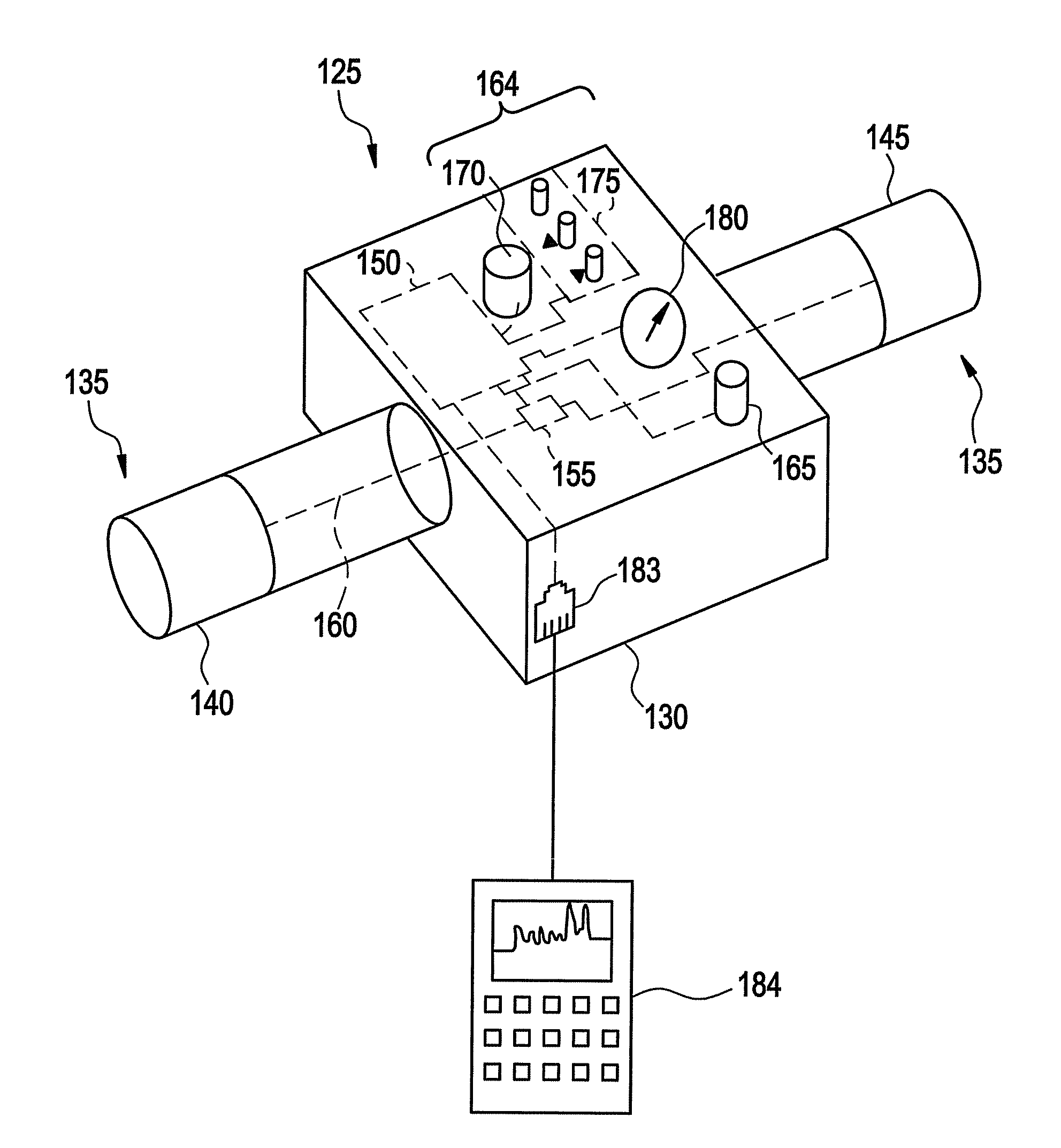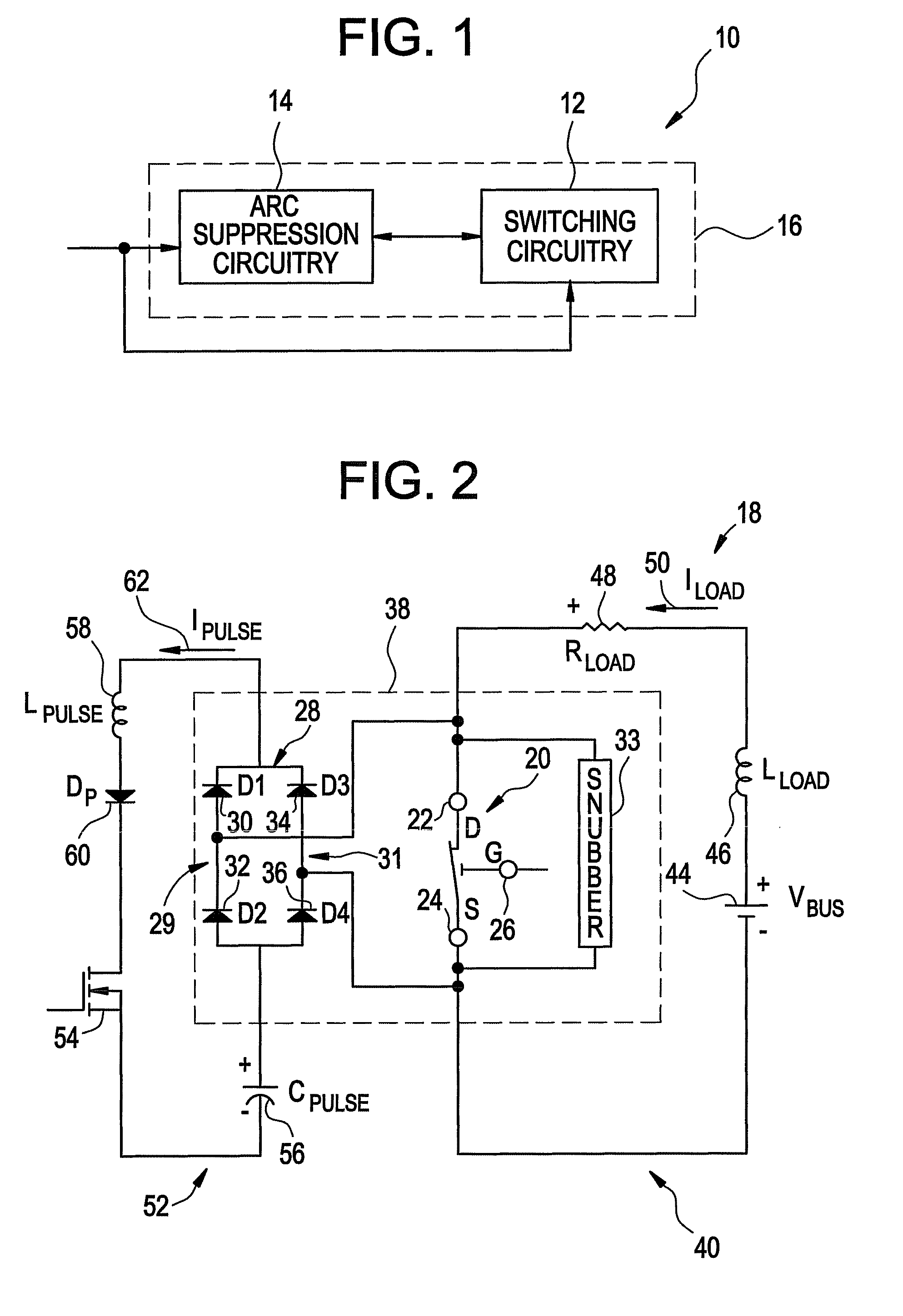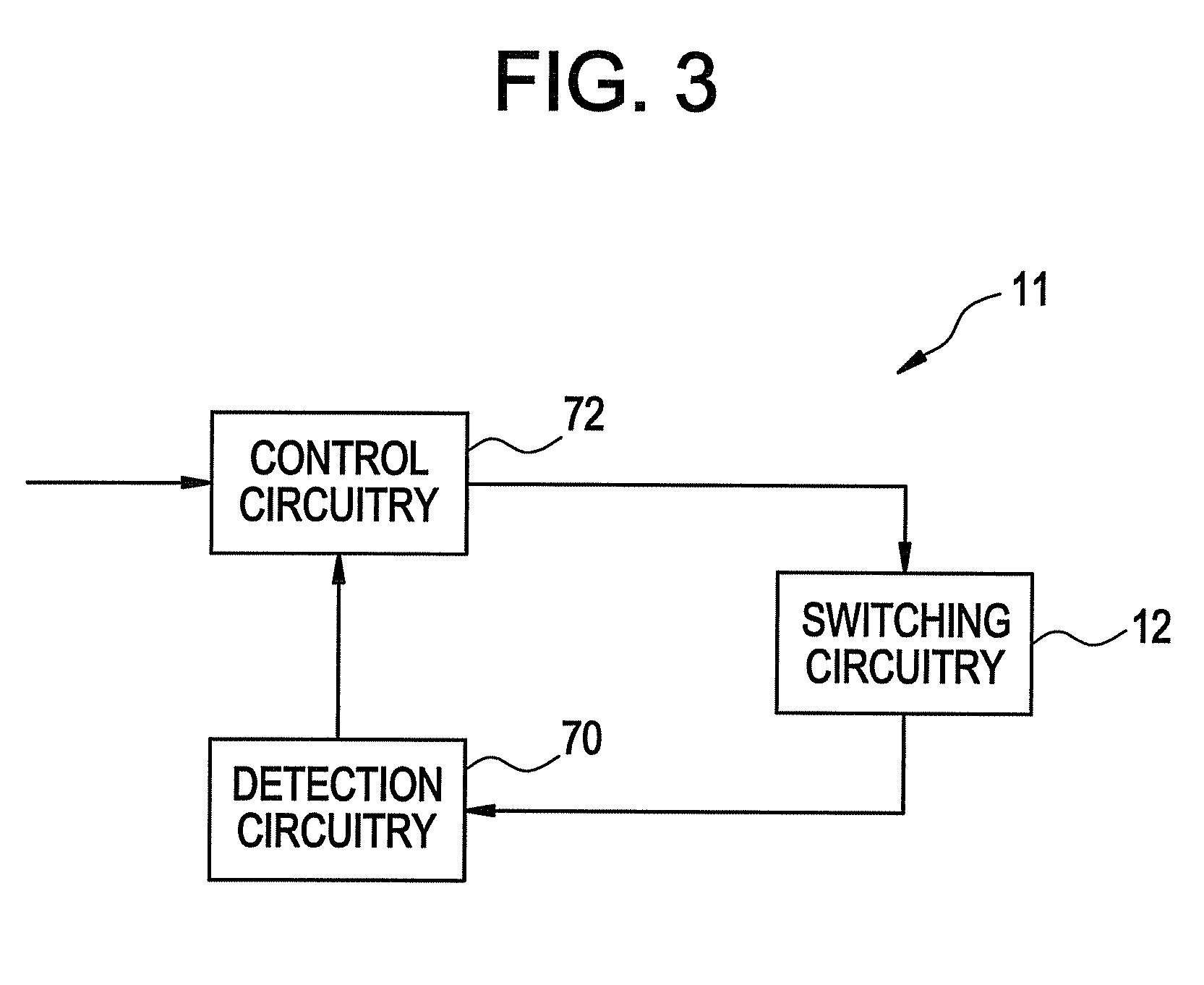Micro-electromechanical system based switching
a micro-electromechanical and switching technology, applied in the field of switching devices, can solve the problems of mechanically overloaded equipment, short circuit faults, high impedance paths, etc., and achieve the effect of facilitating the interruption of an electrical curren
- Summary
- Abstract
- Description
- Claims
- Application Information
AI Technical Summary
Benefits of technology
Problems solved by technology
Method used
Image
Examples
Embodiment Construction
[0025]An embodiment of the invention provides an electrical protection device suitable for electrical distribution systems. The proposed device is packaged such that it can be retrofitted for use within existing fuse holders, or to replace existing fuse applications. Use of micro electromechanical system (MEMS) switches provide fast response time, thereby facilitating diminishing the let-through energy of an interrupted fault. A Hybrid Arcless Limiting Technology (HALT) circuit connected in parallel with the MEMS switches provides capability for the MEMS switches to be opened or closed without arcing at any given time regardless of current or voltage.
[0026]FIG. 1 illustrates a block diagram of an exemplary arc-less micro-electromechanical system switch (MEMS) based switching system 10, in accordance with aspects of the present invention. Presently, MEMS generally refer to micron-scale structures that for example can integrate a multiplicity of functionally distinct elements, for exa...
PUM
 Login to View More
Login to View More Abstract
Description
Claims
Application Information
 Login to View More
Login to View More - R&D
- Intellectual Property
- Life Sciences
- Materials
- Tech Scout
- Unparalleled Data Quality
- Higher Quality Content
- 60% Fewer Hallucinations
Browse by: Latest US Patents, China's latest patents, Technical Efficacy Thesaurus, Application Domain, Technology Topic, Popular Technical Reports.
© 2025 PatSnap. All rights reserved.Legal|Privacy policy|Modern Slavery Act Transparency Statement|Sitemap|About US| Contact US: help@patsnap.com



